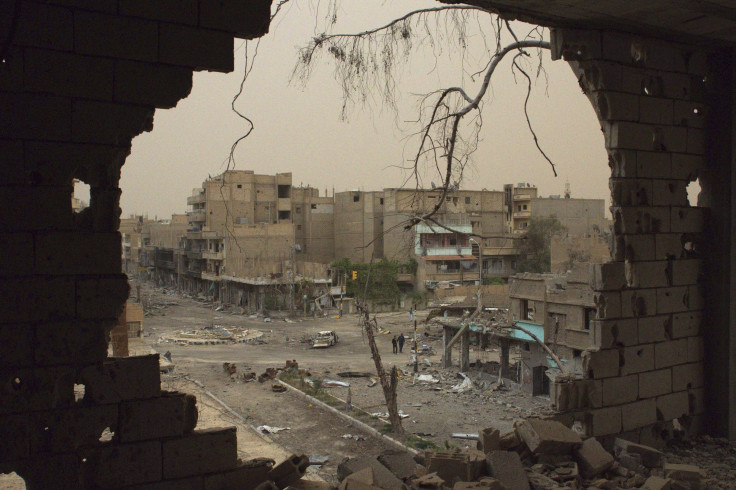Syrian War By The Numbers: How Many People Have Died In Syria And How Many People Have Fled?

Russian President Vladimir Putin announced Monday that its military had achieved its mission in Syria and was ready to begin withdrawing, just one day before the five-year anniversary of the Syrian civil war. The announcement marked the latest turn of events in a conflict that has become the world's deadliest current civil war.
When protests erupted across Syria as part of a freedom movement that swept several Arab countries in 2011, not many could have foreseen the devastation that would take place in the ensuing five years. Today, between 270,000 and 470,000 people have been killed, and more than half the population of 22 million has been displaced. NASA footage has shown that the country has literally plunged into darkness, as more than 83 percent of Syria’s lights have gone out.
Countless rebel groups rule over parts of the country, the Syrian government has continued its bombardment of rebel-held areas and the war has given rise to some of the world's most atrocious extremist groups, including the Islamic State group, which now controls large swaths of land in both Syria and neighboring Iraq.
Nearly 5 million Syrians live in neighboring countries, about a million have applied for asylum in Europe and more than 13 million displaced people are living in desperate situations within Syria, according to Mercy Corps, an aid organization that operates on the ground. Turkey hosts the largest population of Syrian refugees, with some 2.6 million people. About one in five people in Lebanon is a Syrian refugee.
It's mud , rain , cold , little food but kid in idomeni refugee camp ، mostly #syria-n trying to have some fun pic.twitter.com/HJysQOHw6T
— Nasser Atta (@nasseratta5) March 14, 2016
Moscow pushed its forces into the war-ravaged country last September to help bolster the embattled leader Bashar Assad's government, angering many government opponents and human rights advocates who charged the Russian military with exacerbating an already-dismal humanitarian situation.
Five years on, there’s rare, yet ever-tenuous hope as Syria has seen its first major lull in violence. Amid a partial ceasefire that took effect Feb. 27 — pushed forward primarily by outsiders and agreed to by the Syrian regime and opposition groups — deaths have fallen sharply. International leaders hope the “cessation of hostilities” will lead to a long-term ceasefire and an eventual peace agreement, but skepticism on the ground remains profound.
© Copyright IBTimes 2025. All rights reserved.






















